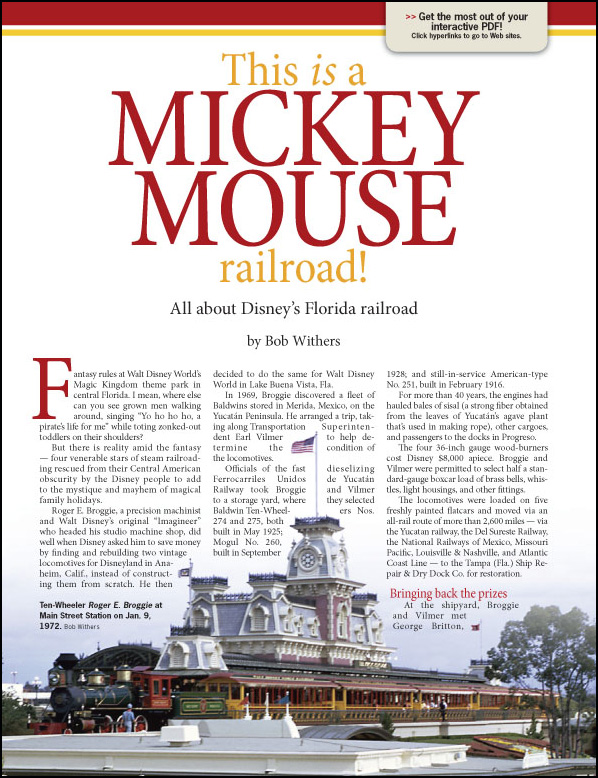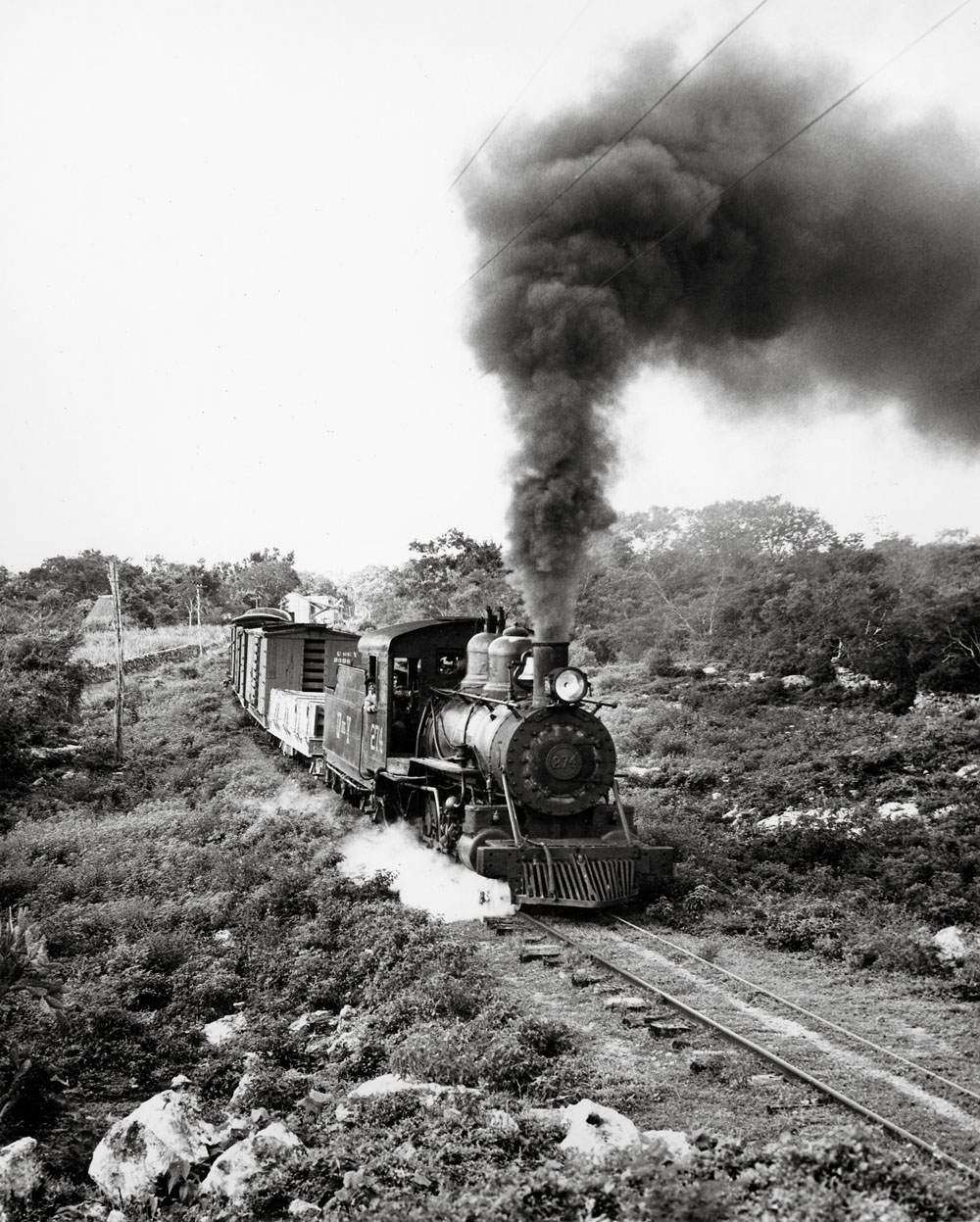But there is reality amid the fantasy — four venerable stars of steam railroading rescued from their Central American obscurity by the Disney people to add to the mystique and mayhem of magical family holidays.
Roger E. Broggie, a precision machinist and Walt Disney’s original “Imagineer” who headed his studio machine shop, did well when Disney asked him to save money by finding and rebuilding two vintage locomotives for Disneyland in Anaheim, Calif., instead of constructing them from scratch. He then decided to do the same for Walt Disney World in Lake Buena Vista, Fla. In 1969, Broggie discovered a fleet of Baldwins stored in Merida, Mexico, on the Yucatán Peninsula. He arranged a trip, taking along Transportation Superintendent Earl Vilmer to help determine the condition of the locomotives.
Officials of the fast dieselizing Ferrocarriles Unidos de Yucatán Railway took Broggie and Vilmer to a storage yard, where they selected Baldwin Ten-Wheel-ers Nos. 274 and 275, both built in May 1925; Mogul No. 260, built in September 1928; and still-in-service American-type No. 251, built in February 1916.
For more than 40 years, the engines had hauled bales of sisal (a strong fiber obtained from the leaves of Yucatán’s agave plant that’s used in making rope), other cargoes, and passengers to the docks in Progreso.
The four 36-inch gauge wood-burners cost Disney $8,000 apiece. Broggie and Vilmer were permitted to select half a standard-gauge boxcar load of brass bells, whistles, light housings, and other fittings.
The locomotives were loaded on five freshly painted flatcars and moved via an all-rail route of more than 2,600 miles — via the Yucatan railway, the Del Sureste Railway, the National Railways of Mexico, Missouri Pacific, Louisville & Nashville, and Atlantic Coast Line — to the Tampa (Fla.) Ship Repair & Dry Dock Co. for restoration.















